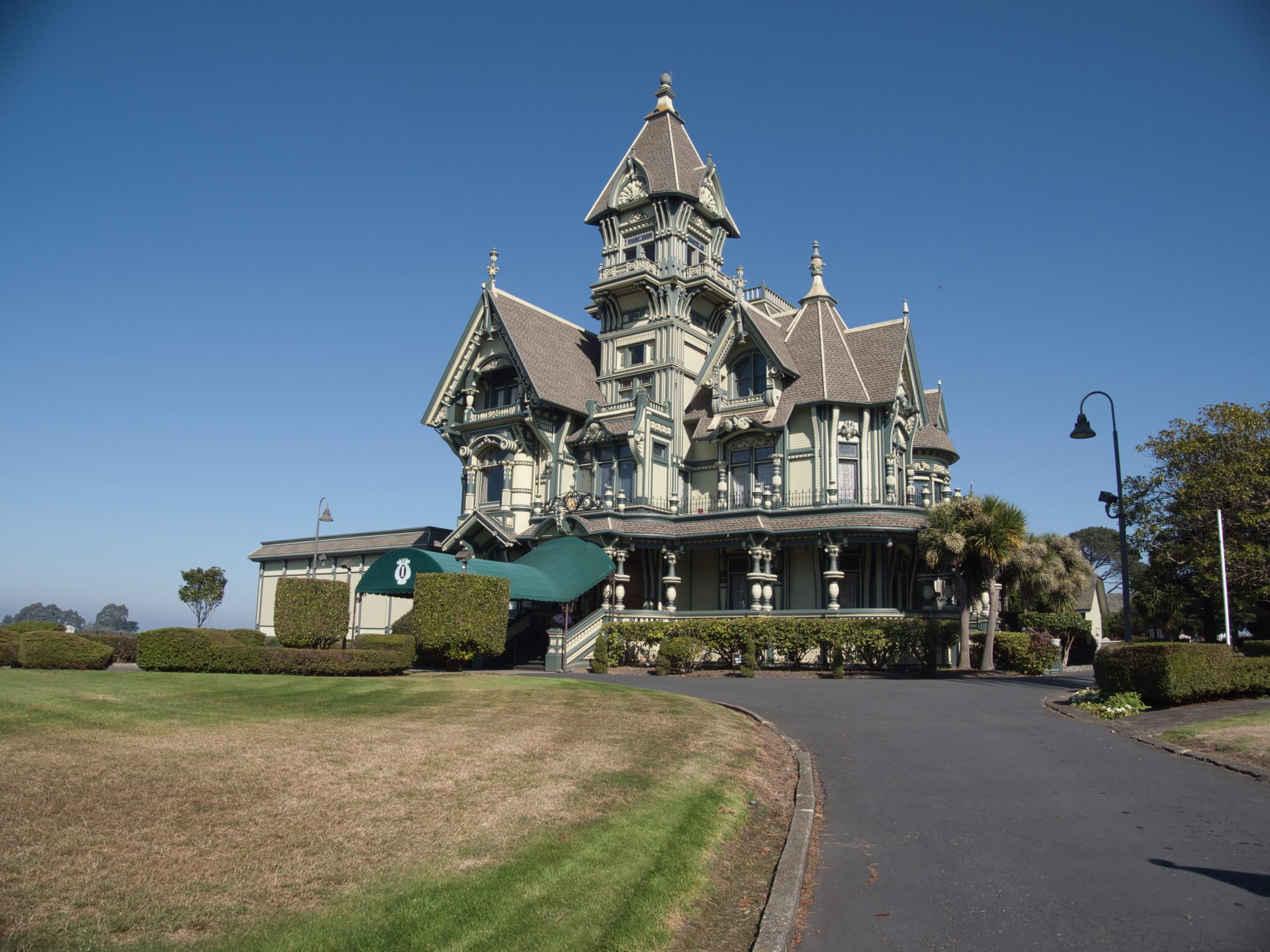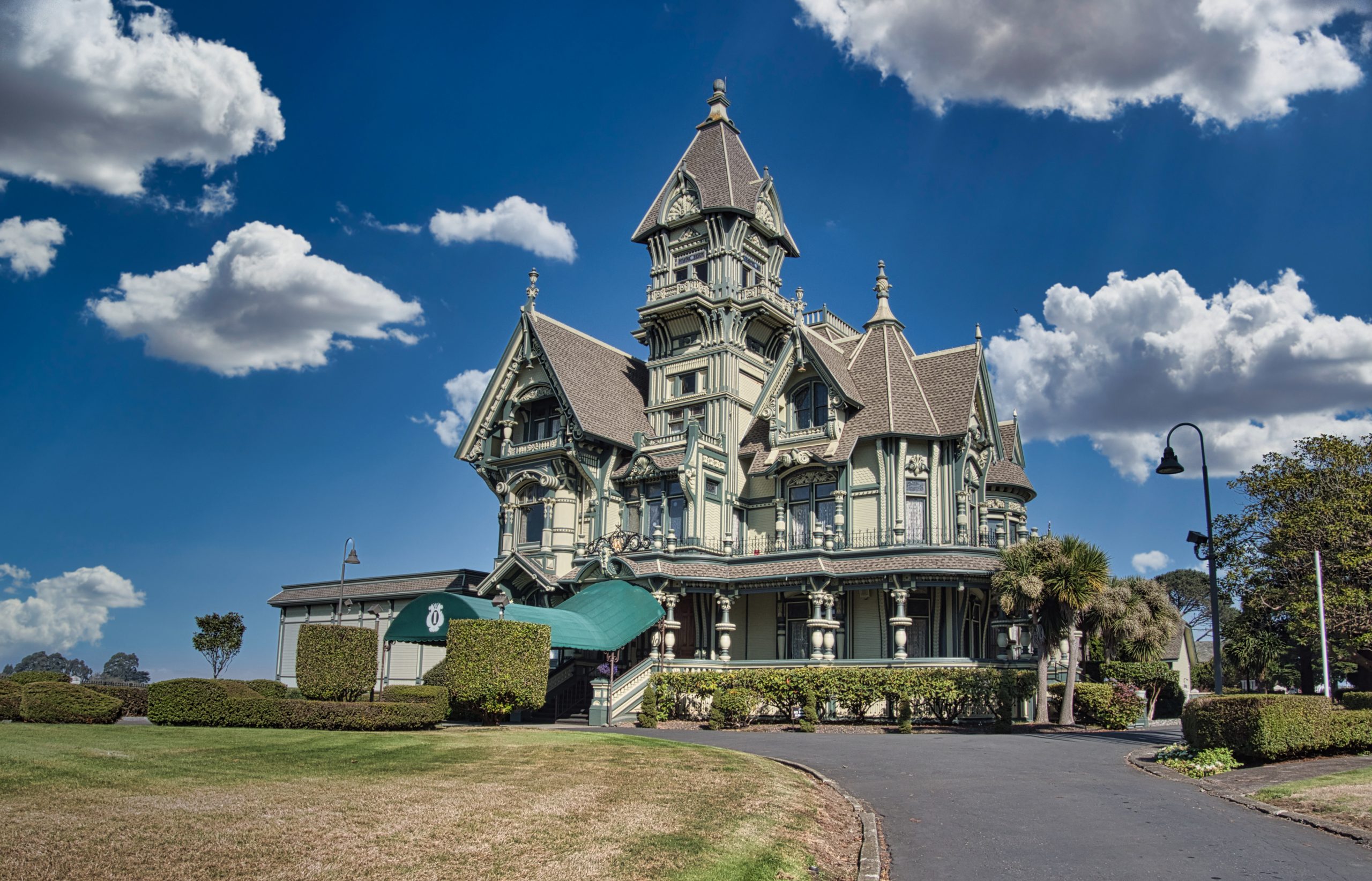Below are two photographs of the Carson House located in Eureka, California. The house is now the Ingomar Club, but I still think of it as the Carson House. The house was built in 1885 and was the home of pioneer lumberman, William Carson. It is one of the most photographed structures in the United States, despite its remote location.
This image was made using a mirror-less camera. A few years ago I moved from the full-frame Canon 5D Mark II over to the Olympus OM-D EM-1 Mark II (credit Olympus for coming up with such a complicated identifier) as a weight saving move. I was hesitant to move down to the 4/3 sensor size and seriously considered one of the Fujifilm models as they use the APS sensor size. The fear was one of losing resolution. My fear was unfounded. Unless you plan to have your image blown up and covering the side of a building, a high quality 4/3 camera will do the job. The other mirror-less option was to go with a full-frame Sony. To do so would have increased the cost significantly, particularly for a full lineup of lenses.
I also use the Olympus Mark III as it has neutral density software capability. More on neutral density later if interested. Just leave a comment.
“The Carson Mansion is a large Victorian house located in Old Town, Eureka, California. Regarded as one of the highest executions of American Queen Anne style architecture, the house is “considered the most grand Victorian home in America.”
Original Photograph
Below is the Carson House image right out of the Olympus camera. BTW, that addition on the left side is not part of the original structure.

Carson House – Eureka, California
Enhanced Photograph
The photo below illustrates sky (or cloud) replacement using a feature built into Luminar AI. I have a database of over 200 different skies and I add to it on a regular basis. While I don’t think the cloud choice below is the best available, it illustrates the point I’m trying to make with these two images.
To get the most out of Luminar AI, definitely make your photo images in RAW and avoid jpg. It took me a long time to learn this lesson. I was a slow learner. Don’t make the same mistake. It is easy to go from RAW to jpg, as I’ve done to post these images. You cannot go back to RAW if you create your images in jpg. A rule of good photography is to always shoot in RAW. The only reason I would make an exception is if I was in a foreign country and I was running out of storage space. RAW files are larger than jpg files.

In a later blog post I’ll show additional power of the Luminar AI software. I find the software extremely easy to use. There are a few sliders available that turn a throw-away image into something worth keeping. Even lazy post-processors can benefit from Luminar AI and it is much easier to use than either Lightroom or Photoshop and I’ve used them all.
Discover more from ITA Wealth Management
Subscribe to get the latest posts sent to your email.
I should have added that I used the Olympus 1:4 12-100mm zoom lens with the above image. This is my favorite “walk-about” lens.
Lowell
Thanks for your great tips on photography and nice photos!
“A good photograph is knowing where to stand.” – Ansel Adams
I would add – Pay attention to the background.
Lowell
There is a lot going on with that architecture. Would Luminar AI allow you to remove the brown spots to make the grass appear greener? I’d be interested to lean more about the neutral density software capability allows you to do. Perhaps you could post a photo of the new camera that you now use. As an aside email notices about updates to ITA wealth had stopped for a while, but appear to have resumed with the posting of the Bergen, Norway photo. Its not the end of the world when notices don’t arrive as I can always log in to see what is new. Thanks for sharing.
James,
I’ve not experimented with painting in green on brown grass, but I think it is possible.
The camera I’m now using is the Olympus OM-D EM-1 Mark II and I also have a Mark III. It is the Mark III that has the processing power to apply neutral density (ND) applications. I’m looking for a YouTube video that demonstrates how this works, but so far have not located the video I wanted. More later as I need to run right now.
Lowell
PS Here is one video. https://www.youtube.com/watch?v=oVOz8fSaRec